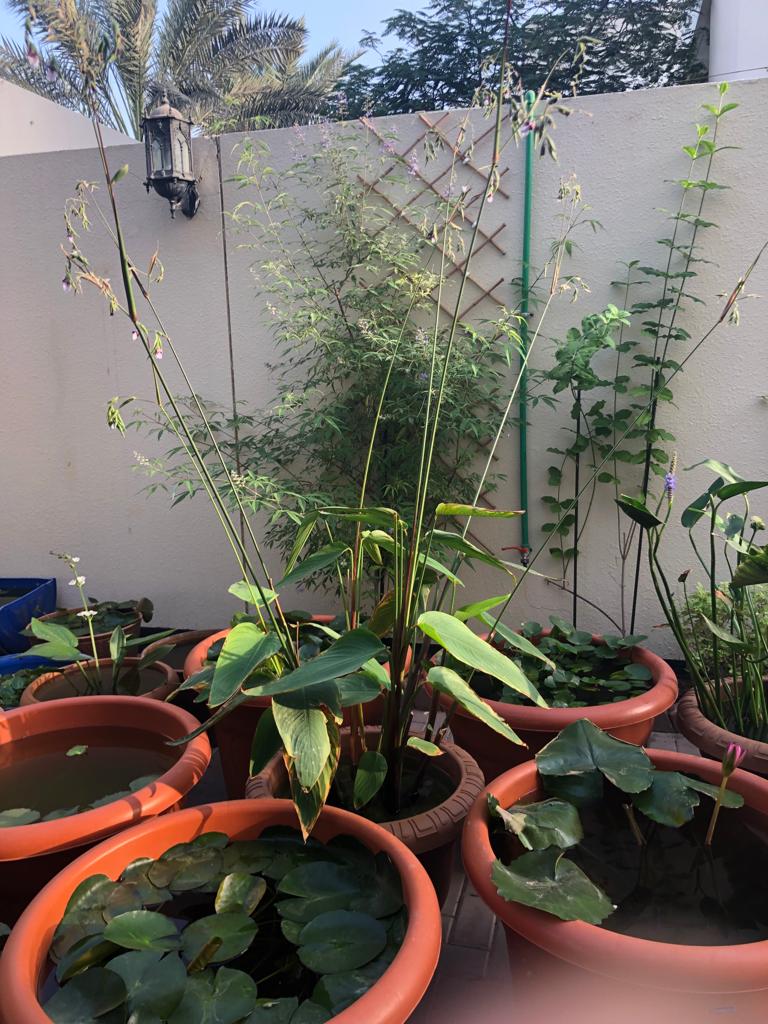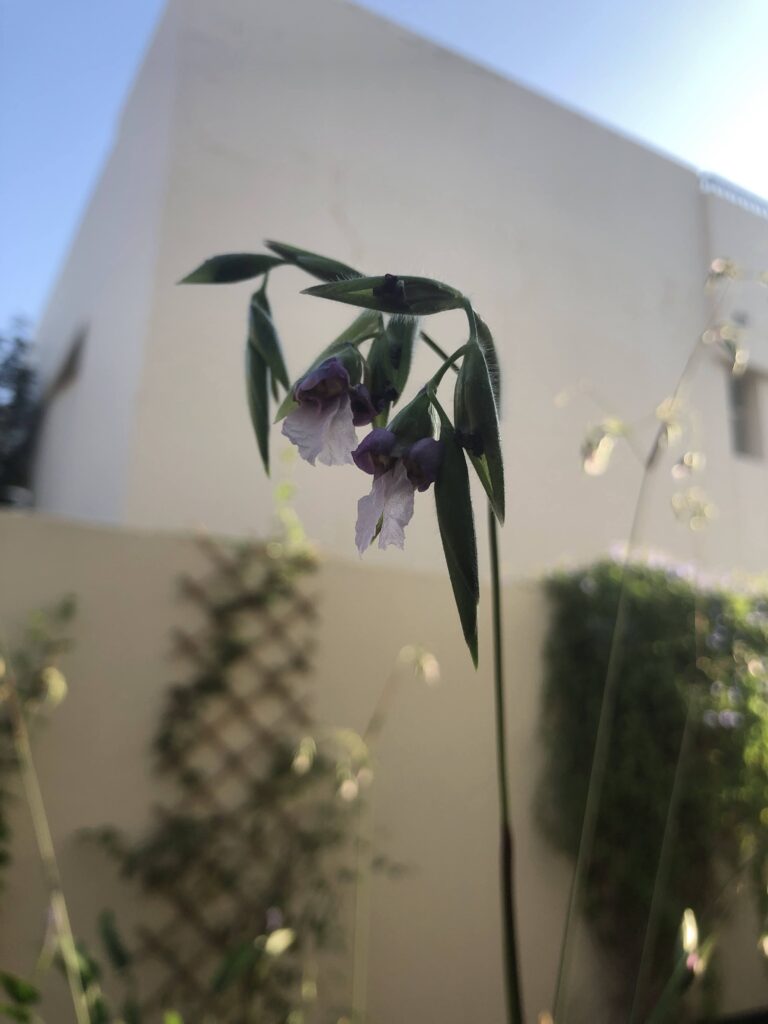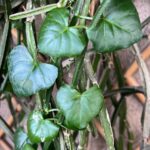As usual, I acquired this plant from a dear friend who has an amazing collection of water plants. I was not impressed to be honest when I first saw it but it is quite interesting when it flowers and its foliage looks good in your water feature or pond.
Since the plant is tallish compared to most water plants, I have arranged it in the middle of the circle of water lilies so it gives a nice effect. But coming back to the plant itself, it is an interesting plant that is used in the rejuvenation of marshlands and bogs. The Alligator Flag, also known as Fire Flag, Thalia geniculata, is a large plant that grows in swamps and wet ditches. It blooms from summer to fall. In the Gulf, it blooms during the September to May season.

The Fire Flag’s large elongated leaves are held on long stalks. The leaves are broadly lance-shaped, with broadly rounded bases. They can be up to eight inches wide and more than 2 1/2 feet long. Several leaves growing together are sheathed at the base. The Fire flag’s flowers are paired; that is, two flowering bracts emerge on top of a tall flower stalk as multiple small purple flowers that hang from the bracts. The flowers have three petals.
Because this plant is a large spreading or colonizing plant, it is great for restorations of larger areas in wet conditions or shorelines.
Usually, when alligators swim through the water, you barely see a ripple. But, there is one plant whose movement often indicates the presence of these reptiles.
Alligator flag (Thalia geniculata) often grows in dense patches of plants that reach heights taller than many people. Three-foot-long leaves suspended from skinny stems and purple flowers that dangle from zigzagging stalks easily wave in the air when large aquatic creatures like alligators pass through.
It is not particularly useful for bees in terms of nectar or pollen but are the plants which the Brazillian Skipper Butterfly uses to lay its eggs.
Pieces of leaves that appear to have been delicately cut, folded over, and glued in place are a sign that a certain skipper butterfly may be in the area. Identification of skippers, many with similarly drab coloration, often confounds even the experts. But, knowing the host plant of a selective skipper can make the identification process a lot easier.








Recent Comments